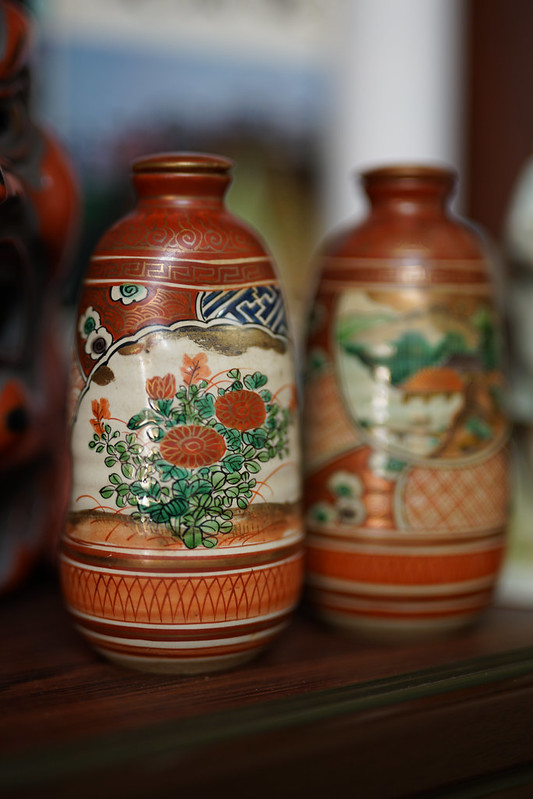
Kutani Ware: Japanese Ceramic Style
 Kutani ware (九谷焼 Kutani-yaki) is a style of Japanese Gotō Saijirō porcelain known for its colorful, vibrant painted designs. Kutani ware was established by Gotō Saijirō of the Maeda Clan.
Kutani ware (九谷焼 Kutani-yaki) is a style of Japanese Gotō Saijirō porcelain known for its colorful, vibrant painted designs. Kutani ware was established by Gotō Saijirō of the Maeda Clan.
Old kutani furnace (left)/Stone monument of Gotō Saijirō (right) | Namazu-tron
He was responsible for setting up a kiln in the village of Kutani, now part of the city of Kaga, under the orders of Maeda Toshiharu, head of the Kaga domain.
Kutani ware (from the Kutani/nine valleys Village) was first documented in 1655, in the first year of the Myoreki epoch. The Kutani mine belonging to the Daishoji Clan had ideal stones to create porcelain. Lord Maeda Toshiharu then instructed Gotō Saijirō to travel to Arita Village and learn the art of making porcelain.
Kutani ware glass
The history of Kutani Ware can be divided into three periods.
Ko-Kutani, meaning old Kutani, are ceramics produced during the first 50 years. These ceramics usually consist of five colors: red, yellow, purple, blue, and green. The traditional Ko-Kutani making process was passed down from one generation to the next, but its continuity halted sometime in the 1800s. Some reasons for the decline were the lack of patronage from the Daishoji clan and the rising popularity of the Arita Ware style, an Imari Iroe porcelain.
Saiko Kutani, meaning the revival of Kutani, originates from the Kasugayama Kiln in Kanazawa 100 years after Ko-Kutani. Many kilns with varying styles competed with one another. One of the more prominent techniques at the time was Kinrade that featured red and gold designs.
The last Kutani period emerged at the beginning of the Meiji era sometime in the 1860s. At the same time, Kutani Ware was introduced in Europe. The more popular design at the time was “Saishoku-Kinrande,” a technique involving the use of modern paint and Western materials combined with old Kutani methods.
Over the years, Japanese master potters developed other techniques such as the use of gold leaf and other colors that come out with proper firing and also transform the material into glass. Kutani come in a broad range of designs and colors, from simple to elaborate gold leaf mainly produced in Kanazawa. The “Yuri-Kinsai” technique, a glazed gold leaf over the surface of a piece, was designated as an Important Intangible Cultural Property in 2001. A memorial to Gotō has also been erected near an old Kutani ware kiln in the city of Kaga.
Discover more about Kutani-yaki pottery:
